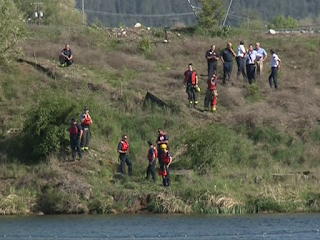WASHINGTON, DC
In advance of Tire Safety Week, which begins on May 24, the National
Transportation Safety Board issued a Safety Alert today outlining how
tire registration and periodic maintenance can reduce the risk of
crashes.
More than 600 people are killed and about 19,000 are injured in
tire-related crashes each year, and tire blowouts are more common during
the summer months when temperatures rise.
“Drivers can feel more assured that they and their families will
reach their destination safely by keeping tires properly inflated and by
checking that they have adequate tread depth and are free of visible
damage,” said NTSB Chairman Christopher A. Hart.
“We encourage everyone
to set reminders on their phones, tablets, and computers to check the
tire pressure on their vehicles at least monthly.”
The Safety Alert includes additional information on registering new
tires, properly maintaining spare tires, and links to additional online
resources.
This and many other Safety Alerts are available at at http://www.ntsb.gov/safety/safety-alerts/Documents/SA_TireSafety.pdf. This document is copied below.
//-----------------------//////////////
DRIVERS: MANAGE TIRE
RISKS FOR A SAFER RIDE. Tire Maintenance
and Registration Can Decrease Crash Risk
The Problem:
More than 600 people are killed and about 19,000 are injured
in tire-related crashes each year.
Many of these crashes resulted from poor tire maintenance,
including failure to maintain proper inflation, check for adequate tread,
monitor for damage, or have repairs made properly.
According to a survey conducted in 2014 by the Rubber
Manufacturers Association, 69 percent of vehicles had at least one
underinflated tire.
Very few motorists register their tires with the
manufacturer, making it less likely that the manufacturer will contact them in
the event of a tire recall.
What to Do:
Register your new tires with the manufacturer, so you
receive tire recall notices.
You can’t tell if your tires are properly inflated just by
looking at them. Check your tire pressure at least once a month. If your tire
pressure monitoring system activates, check your tires as soon as possible.
Inflate your tires to the pressures indicated in your
vehicle owner’s manual or on the “Tire and Loading Information” label located
on the driver’s side door edge (or post) of your vehicle. Do not use the
pressure printed on the tire sidewall.
When checking your tire pressure, also examine your tires
for punctures, signs of uneven tread wear, bald spots, bulges or bumps, cuts or
cracks in the sidewall, or any other abnormalities. These problems can lead to
tire failure.
Don’t forget your spare! Tires can degrade even when not in
use, so keep your spare tire properly inflated and check it monthly for
problems.
To prolong the life of your tires, remember to rotate,
balance, and align your tires in accordance with the information in your
vehicle owner’s manual.
If you hear an unusual sound coming from a tire, slow down
and have your tires checked immediately.
Interested in More
Information?
Education is critical to maintaining your tires properly.
Refer to your vehicle owner’s manual for tire information specific to your
vehicle. The US Department of Transportation, tire manufacturers, tire
retailers, and others have published helpful tips online about properly maintaining,
replacing, and registering your tires, as well as about checking for safety
recalls. You can find valuable information at the following websites:
US Department of Transportation (http://www.safercar.gov/tires)
Rubber Manufacturers Association (http://www.rma.org/tire-safety)
Tire Industry Association (http://www.tireindustry.org/consumer-safety)
This NTSB safety alert and others can be accessed from the
NTSB’s Safety Alerts web page at http://www.ntsb.gov/safety/safety-alerts.





















